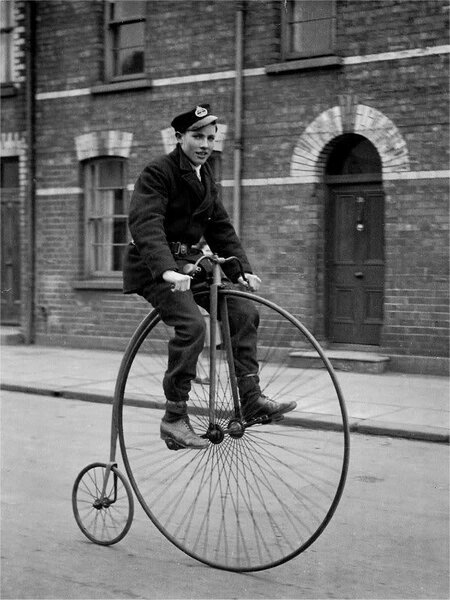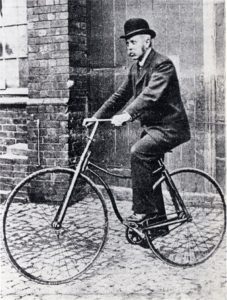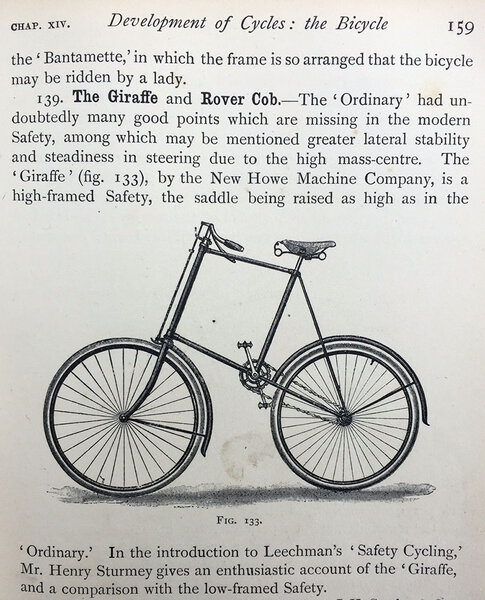- Feedback
- View
Those who know about cycling history and design often say that nothing is completely new.
However, today's marketing people like to tell us that everything is new and ground breaking.
One piece of modern marketing wisdom is that a bicycle with a low bottom bracket is more stable than one with a high bottom bracket. This is repeated on nearly every modern manufacturer's website and riders are even advised that it is worth using shorter cranks to obtain this additional stability.
The Victorians knew a thing or two about bicycle stability. They used to ride high-riders like this...
And whilst having so much weight over the steering wheel gave good control, it also made it very easy to take 'a header' over the handle-bars. These bikes were also large and cumbersome.
So in 1885, John Kemp Starley produced the worlds first commercially successful safety bicycle.
So lower centre of gravity and higher stability. Job Done! ?
?
Well not so. Riders used to riding taller bikes tried the new safety bicycles and complained about a loss of steadiness in steering and loss off lateral (side to side) stability.
In response John Kemp Starley designed this, his 'Giraffe' safety bicycle...
It seems that the Victorian's had a great deal of experience in riding tall bicycles. Back then, knowing that they are easier to balance was common knowledge.
Are modern designers making a mistake simply because they lack the Victorian's first hand experience? Or are they getting confused between lateral stability (side to side balance), and longitudinal stability (stability under braking and acceleration forces)?
However, today's marketing people like to tell us that everything is new and ground breaking.
One piece of modern marketing wisdom is that a bicycle with a low bottom bracket is more stable than one with a high bottom bracket. This is repeated on nearly every modern manufacturer's website and riders are even advised that it is worth using shorter cranks to obtain this additional stability.
The Victorians knew a thing or two about bicycle stability. They used to ride high-riders like this...
And whilst having so much weight over the steering wheel gave good control, it also made it very easy to take 'a header' over the handle-bars. These bikes were also large and cumbersome.
So in 1885, John Kemp Starley produced the worlds first commercially successful safety bicycle.
So lower centre of gravity and higher stability. Job Done!
Well not so. Riders used to riding taller bikes tried the new safety bicycles and complained about a loss of steadiness in steering and loss off lateral (side to side) stability.
In response John Kemp Starley designed this, his 'Giraffe' safety bicycle...
It seems that the Victorian's had a great deal of experience in riding tall bicycles. Back then, knowing that they are easier to balance was common knowledge.
Are modern designers making a mistake simply because they lack the Victorian's first hand experience? Or are they getting confused between lateral stability (side to side balance), and longitudinal stability (stability under braking and acceleration forces)?


